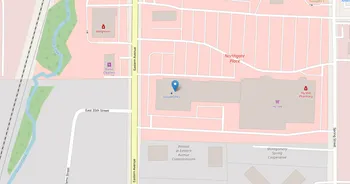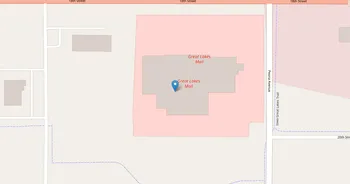William Penn University (WPU) : Overview, Courses, Scholarships & Rankings
About William Penn University
Fun fact: William Penn University's roots are tied to Quaker values that still shape daily life. The campus is known for practical, student-centered teaching across the arts and sciences, business, education, and health fields, with labs, studios, a well-used library, and an upbeat rec center. Students find solid support, from advising and tutoring to counseling and career coaching, and they try ideas through projects and community partnerships.
Oskaloosa brings small-town warmth with a historic square, local coffee spots, and easy access to parks. Campus life feels active and welcoming, with clubs, service groups, music and theater, intramurals, and spirited game days. The culture favors respectful dialogue and hands-on service. Career prep leans practical, with regional employer ties and alumni mentoring. Notable alum: NFL defensive tackle Damon Harrison.
Key Institutional Details
Contact & Profile
Academic & Institutional
Academic Programs & Fields of Study
William Penn University (WPU) offers 35 degree programs across 15 major academic fields, graduating approximately 349 students annually. The most popular fields by graduate volume are Business (5 programs, 79 graduates), Education (5 programs, 78 graduates), Kinesiology (3 programs, 53 graduates), Psychology (1 programs, 26 graduates) and Health (2 programs, 23 graduates). Explore program details, award levels, and graduate demographics below.
Business (5 programs, 79 graduates)
Business Administration, Marketing and Entrepreneurship
| Program Name | Graduates | Gender Distribution | Award Levels | CIP Code |
|---|---|---|---|---|
| Business Administration and Management | 49 |
|
Bachelor's
|
52.0201 |
| Organizational Leadership | 19 |
|
Master's
|
52.0213 |
| Accounting | 4 |
|
Bachelor's
|
52.0301 |
| Entrepreneurial and Small Business Operations | 4 |
|
Bachelor's
|
52.0799 |
| Human Resources Management | 3 |
|
Bachelor's
|
52.1001 |
Education (5 programs, 78 graduates)
Educational Sciences, Teaching Methods and Pedagogy
| Program Name | Graduates | Gender Distribution | Award Levels | CIP Code |
|---|---|---|---|---|
| Elementary Education | 55 |
|
Bachelor's
|
13.1202 |
| Physical Education Teaching and Coaching | 12 |
|
Bachelor's
|
13.1314 |
| General Education | 8 |
|
Bachelor's
|
13.0101 |
| Social Studies Teacher Education | 2 |
|
Bachelor's
|
13.1318 |
| Mathematics Teacher Education | 1 |
|
Bachelor's
|
13.1311 |
Kinesiology (3 programs, 53 graduates)
Exercise Science, Sports Medicine and Physical Recreation
| Program Name | Graduates | Gender Distribution | Award Levels | CIP Code |
|---|---|---|---|---|
| Sport and Fitness Management | 31 |
|
Bachelor's
Master's
|
31.0504 |
| Exercise Science and Kinesiology | 13 |
|
Bachelor's
|
31.0505 |
| Sports, Kinesiology, and Physical Education Fitness | 9 |
|
Bachelor's
|
31.0599 |
Psychology (1 programs, 26 graduates)
Psychological Sciences, Mental Health and Behavioral Studies
| Program Name | Graduates | Gender Distribution | Award Levels | CIP Code |
|---|---|---|---|---|
| General Psychology | 26 |
|
Bachelor's
|
42.0101 |
Health (2 programs, 23 graduates)
Healthcare Professions, Medical Sciences and Clinical Practice
| Program Name | Graduates | Gender Distribution | Award Levels | CIP Code |
|---|---|---|---|---|
| Registered Nursing | 21 |
|
Bachelor's
|
51.3801 |
| Nursing Practice | 2 |
|
Bachelor's
|
51.3818 |
Social Sciences (3 programs, 21 graduates)
Sociology, Anthropology and Political Science Studies
| Program Name | Graduates | Gender Distribution | Award Levels | CIP Code |
|---|---|---|---|---|
| Criminology | 12 |
|
Bachelor's
|
45.0401 |
| Political Science and Government | 8 |
|
Bachelor's
|
45.1001 |
| Sociology | 1 |
|
Bachelor's
|
45.1101 |
Biological Sciences (1 programs, 16 graduates)
Life Sciences, Biotechnology and Biomedical Research
| Program Name | Graduates | Gender Distribution | Award Levels | CIP Code |
|---|---|---|---|---|
| Biology and Biological Sciences | 16 |
|
Bachelor's
|
26.0101 |
Arts (4 programs, 11 graduates)
Fine Arts, Design Studies and Creative Performance
| Program Name | Graduates | Gender Distribution | Award Levels | CIP Code |
|---|---|---|---|---|
| Cinematography and Film Production | 7 |
|
Bachelor's
|
50.0602 |
| Art Studies | 2 |
|
Bachelor's
|
50.0701 |
| Theatre Arts | 1 |
|
Bachelor's
|
50.0501 |
| Music Performance | 1 |
|
Bachelor's
|
50.0903 |
Eng. Technologies (3 programs, 9 graduates)
Applied Engineering Technologies and Technical Support
| Program Name | Graduates | Gender Distribution | Award Levels | CIP Code |
|---|---|---|---|---|
| Industrial Technology | 5 |
|
Bachelor's
|
15.0612 |
| Industrial Engineering Management | 3 |
|
Bachelor's
|
15.1501 |
| Engineering Technologies and Technicians | 1 |
|
Bachelor's
|
15.1199 |
Computer & IT (2 programs, 7 graduates)
Computer Science, Information Technology and Cybersecurity
| Program Name | Graduates | Gender Distribution | Award Levels | CIP Code |
|---|---|---|---|---|
| Information Technology | 5 |
|
Bachelor's
|
11.0103 |
| Computer Science | 2 |
|
Bachelor's
|
11.0701 |
Admission Requirements & Test Scores
Comprehensive overview of admission criteria, standardized test score ranges, and application requirements for prospective students at William Penn University (WPU).
Application Requirements
Data based on IPEDS for 2022-2023 academic year. Test score ranges represent the middle 50% of admitted students (25th-75th percentile). Requirements may vary by program.
Tuition, Fees & Estimated Costs
Overview of tuition rates, housing, and other annual education expenses for undergraduate and graduate students
Financial Aid & Student Support
Summary of scholarships, grants, student loans, and financial aid statistics for undergraduate students
Student Success Metrics
Graduation rates and post-graduation earnings to help assess student outcomes and long-term value of education.
Loan Burden & Repayment Outcomes
Breakdown of loan repayment rates and student debt levels by income and dependency status.
Frequently Asked Questions
Find answers to the most common questions about William Penn University (WPU)
How much does it cost to attend William Penn University (WPU)?
The annual tuition at William Penn University (WPU) is $28,750 for in-state students. When including room and board, books, and other expenses, the total estimated cost is approximately $43,800 for in-state students. Additional costs include room and board $7,712 (on) / $7,448 (off) and books and supplies $1,504.
Data based on IPEDS program completions for 2022-2023 academic year. Tuition and cost estimates are approximate and may not include all fees, personal expenses, or transportation costs.
What academic programs and degree levels does William Penn University offer?
William Penn University (WPU) offers 35 academic programs across 15 major fields of study, with available degree levels: Associate's, Bachelor's, Master's, Other Award.
Most popular program areas include:
- Business Administration, Marketing and Entrepreneurship (5 programs)
- Educational Sciences, Teaching Methods and Pedagogy (5 programs)
- Exercise Science, Sports Medicine and Physical Recreation (3 programs)
- Psychological Sciences, Mental Health and Behavioral Studies (1 programs)
- Healthcare Professions, Medical Sciences and Clinical Practice (2 programs)
Data based on IPEDS program completions for 2023-2024 academic year. Numbers reflect programs where students graduated, not all offered programs.
What is the acceptance rate for William Penn University?
William Penn University (WPU) has an 57% acceptance rate and a 46.7% yield rate, making it selective.
Admission statistics breakdown:
- Total applicants: 1,112
- Students admitted: 634
- Students enrolled: 296
Data based on IPEDS for 2022-2023 academic year. Admission statistics may vary by program and application cycle.
What financial aid and scholarships are available at William Penn University?
William Penn University (WPU) provides financial aid to 22% of first-time, full-time students, with average grants of $18,434 and average loans of $6,806.
Average financial aid amounts by type:
- Pell grants: $5,054
- State/Local grants: $6,882
- Institutional grants: $14,317
- Federal loans: $5,066
The university supports 313 students with grants and 299 students with loans annually.
Data based on IPEDS for 2022-2023 academic year. Financial aid amounts and percentages may vary by program, enrollment status, and individual circumstances.
What is the average salary for William Penn University graduates?
William Penn University (WPU) graduates earn a median salary of $40,189 after 6 years and $48,936 after 10 years.
The salary range 10 years after graduation spans from $29,672 (25th percentile) to $69,661 (75th percentile), with top earners reaching $76,800 (90th percentile).
Data based on IPEDS for 2022-2023 academic year. Salary data reflects graduates who received federal financial aid (approximately 60% of all graduates). Actual earnings may vary significantly based on program, location, and individual circumstances.
Related Universities




Found something useful? Help others discover it too! Share with friends, on social media, or save for later - every share helps someone find the information they need.